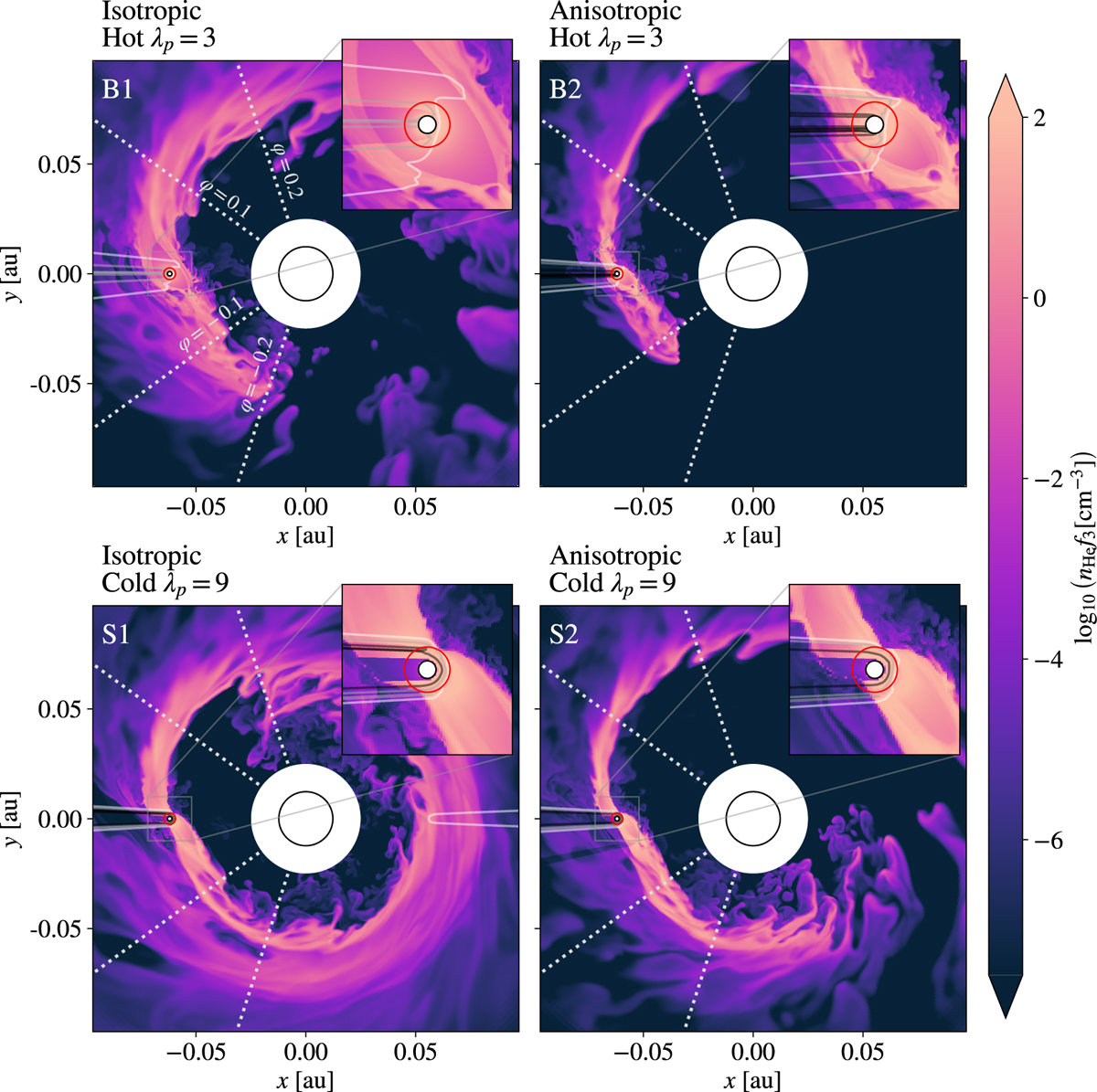Fig. 2

Download original image
Metastable helium number density derived from the planetary wind, contrasting hot and cold planetary winds alongside isotropic and dayside-dominant outflow configurations. The star is positioned at the center, with the planet located in the −x direction, orbiting the star counterclockwise. The black circles indicate their extent, while the red circle represents the Hill radius, RH = 2.6 Rp, of the planet. Black, gray, and white contours mark the cumulative optical depth of τ = 10, 1, and 0.1, respectively, of the metastable helium line toward the observer in the radial direction. The dotted lines mark the orbital phase angles, φ. All snapshots are taken after eight orbits, with the steady state reached after four orbits. The time evolution of model S2 is illustrated in the movie provided in Appendix A. Only the scenarios involving a cold planetary wind result in a widely extended, high-density outflow. Specifically, a cold, dayside-dominated outflow (S1) produces a more prominent leading stream compared to the trailing one.
Current usage metrics show cumulative count of Article Views (full-text article views including HTML views, PDF and ePub downloads, according to the available data) and Abstracts Views on Vision4Press platform.
Data correspond to usage on the plateform after 2015. The current usage metrics is available 48-96 hours after online publication and is updated daily on week days.
Initial download of the metrics may take a while.


